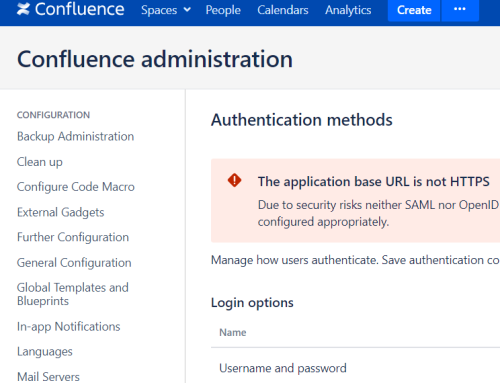OSCE3 (Offensive Security Certified Expert 3) is a certification from Offensive Security which has replaced the (now retired) OSCE certification. This post explores a pentester’s journey from being OSCE certified to becoming OSCE3 certified.
Way back in the halcyon year of 2012, I received the OSCE certification from Offensive Security. At the time, it was regarded as one of the more difficult to obtain certifications and required an in-depth knowledge of several deep technical subjects. These included advanced (at the time) web application hacking, advanced (at the time) shellcoding skills, and advanced (at the time) fuzzing and exploit creation skills.
Upon obtaining the OSCE certification, it was quite easy to show that one had a myriad of skills in the security world and would be able to pentest, or at least be able to hack their way out of a paper bag. However, the security world marches on, and techniques become obsolete or outdated – or in this case, both. What was once considered cutting edge generalist training became a shadow of its former self.
Introducing: Offensive Security Certified Expert 3 (OSCE3)
Fortunately, Offensive Security was aware of this, and recently revamped the OSCE training and certification into far more in-depth and relevant courses. It was split into three separate trainings: Advanced Web Attacks and Exploitation, which has the OSWE certificate, Evasion Techniques and Breaching Defenses, which has the OSEP certificate, and Windows User Mode Exploit Development, which has the OSED certificate. Obtaining all three would give the OSCE3 certificate, which is the new and improved version of the OSCE that I had originally obtained.
I decided that I was going to update my certification status. I was interested both in the advanced training that was offered, and in seeing if all of the security experience I had gained in the meantime made it relevant for me to obtain. Meaning, yeah, I would get some shiny letters, but would it actually up my game? With that in mind, I jumped into the training, eventually receiving all three of the certifications and obtaining my OSCE3, with the final certificate earned 11 months after my first was earned.

What follows is my review of the three courses, with a particular eye towards their relevancy to those who have already been pentesters for a while.
Offensive Security Web Expert (OSWE/WEB-300)
Advanced Web Attacks and Exploitation (referred to as AWAE or WEB-300) is an advanced web attack course that replaces the (admittedly minor) web portion of OSCE. Those who complete the course and pass the exam earn the Offensive Security Web Expert (OSWE) certification. While both courses dealt with reading the source code of a web application and finding a vulnerability, the OSCE version seemed more of an afterthought than a core part of the course. AWAE is designed to change all of that, bringing in a fully fleshed-out course dealing with code review and exploit creation on the web.
And, oh boy, does it ever! There are some basic topics that are taken much further, like XSS and SQL injection. Every tester should know how to exploit them, but the course helps bring more interesting payloads and shift direction on basic exploitation to kick it up a notch. While everyone can drop a BeEF payload and hope it works, or fake a password form for XSS, there is so much more to do, and the content really helps bring that mindset across. Application specific payloads are the norm, and while the exact use cases are not going to be as easily replicated as the studies in the labs, the mindset shift of “Let’s put in the password form in the XSS field” to “What is the most impactful action we can take on the application, and how can I code the payload to do it?” is a fantastic step forward.
And that’s not even the best part. The best part of the AWAE course, where it truly shines? The more niche and unique topics. Deserialization, SSRF, CORS, and more are all explained *thoroughly*. Where perhaps in other courses the explanation was too much, in this one, there is just enough to get all of the nuances across without overloading with useless information.
The proofs of concept are also fantastic. Some of them are contrived, like the CORS payloads, in order to prove the point, but the vast majority of them are works of art explaining how to comprehensively exploit an application. The code created in the course is generally portable and adaptable, so once created, the proof of concept can work for you forever. That’s service.
Of the modules in the material, I think I enjoyed the deserialization the most. Before AWAE, while I could scan and potentially exploit these issues, there were definitely parts I did not understand. However, with the thorough, step by step explanations in the course, every mystery was laid to rest, and it became second nature. In fact, in a live engagement during the course, I was able to pull down an executable from Citrix via a breakout exploit. Upon examining the code, I found an unsafe deserialization in how it handled clipboard data. Several hours of Googling to find a program to edit the hex values and attributes of clipboard data later, I had a simple copy/paste payload that would trigger a shell on the Citrix server. I’ll be honest, before the course, I likely would not have been able to craft that payload, and would have left exploitation as an exercise to the reader.
There are three challenge labs in AWAE, each of which highlights various portions of the course. However, I took the course before the labs were released, so I do not have comments on them. From my activity on the forums and OffSec Discord, I hear good things.

I will hold my comments on the format of the exam, other than to say that of all the OffSec exams, it felt the most real world. At no point did I feel that an obstacle was artificial, and all were overcome the way I would have done it in a live pentest.
There are, of course, some areas where I felt the AWAE course could do with further development. At times it was hard to follow along in the PDF and videos, and making changes to code to add the next step in the PoC scripts can be awkward. Sometimes, that requires moving to the forums or discord to be told that there was a minor error in the code, which can get frustrating at times. Connectivity to the apps can also be an issue, with certain requests hanging because of the VPN or the like. While they exist, they do not lower the quality of the learning.
The real-world value of this course, even for an experienced tester is fantastic. Deeper understanding, better payloads, faster outcomes, and more. This is definitely a course to take to up your game to the next level.
Offensive Security Experienced Penetration Tester (OSEP/PEN-300)
Geared as an advanced infrastructure course, OSEP aims to replace the second leg of the tripod that was OSCE and its materials. The core it seeks to replace was the very spindly leg of creating code-caves and custom XOR encoding schemes.

At its core, OSEP teaches Active Directory fundamentals, antivirus evasion, and lateral movement techniques that are seen everywhere today – and I would say it does an excellent job.
Each module can be characterized by the following path: A technique is discussed, broken down to its individual parts of how and, much more importantly, *WHY* it works, and then implemented. This breakdown is fantastic in all 17 of the modules in the course. At times, the breakdown of the Why is not as important as the How, especially given that, sometimes, a few sentences past a long-winded explanation of Why, we are told to use another tool that does it all for us silently. Even so, walking away with more fundamental knowledge is what allows us to grow as pentesters, and is not something to give away. In the end, each student will have to decide on their own if the Why is as important to them as the How. My advice? It is. Spend time understanding and digesting the Why and doing the extra miles in order to gain the most out of the course.
Certain modules delved into tremendous depth in niche cases that were not necessarily relevant, such as Linux breakouts, or were quick on things that may have benefited from more time on it, such as proxying and domain fronting. While the former could have been better served with a Citrix breakout instead of Linux, in the end it was a fascinating module, and I would not want it changed – perhaps expanded to include RDWeb and Citrix, but certainly not reduced. The domain fronting content is relatively short due to technical limitations and new security measures in the usual domain fronting services, so I understand why it was not so long. But even so, perhaps another, more intense lab would have helped drive home the concepts.
In terms of real-world value, there is no substitution for the OSEP course. Even during studying I was immediately able to put techniques learned into practice, including getting Domain Administrator privileges on two domains that were previously uncracked, using lateral movement techniques, and assisting a colleague with a CLM and AppLocker bypass. Combining the tools with the advanced AV evasion techniques meant that I had a fully homegrown tool that can bypass AV, AMSI, PowerShell CLM, and AppLocker – even on a fully patched and protected modern OS. The satisfaction of watching a command shell with no restriction pop up when a co-worker swears it cannot be done is not to be understated – it’s awesome.
This tool is shown below, which hijacks a thread of notepad and runs a reverse shell (not shown). I take no credit for any of the research – I merely ported some sections of C++ to C# and combined several techniques into one.

The was created to be nothing more than a showcase of various techniques, and is overkill for actual use. If used in the wild, I recommend the following: Don’t. If you must, then choose a single technique and work with that. The tool pictured above works to bypass everything, but is completely unnecessary and not good for any stealth or long-term AV bypass.
Of the course tracks, I’m torn between enjoying lateral movement or AV evasion more. In theory, lateral movement is fun, but limited in practice in the real world, where domains are so often hacked with Responder or Kerberoasting or other “single step to DA” techniques. In practice, AV evasion is a never-ending cat and mouse cycle that consistently allows us to up our game and create better tools. On the whole, I would probably say AV evasion helped up my tooling and coding game the most. See below for a real-world screenshot of me avoiding AV.

The course also has six challenge labs of varying difficulty in order to refine tools and techniques. They are genuinely fantastic and I wish there were more. The challenges each took a few hours to complete, even challenge one, where I went down so many rabbit holes that Alice would be ashamed of me. The general sense was that each challenge took about 4-6 hours, and if there was any point that I was stuck, I had the forums and discord to help me out. Once done, I used the extra time in the labs to refine my tooling, until I had a fully AV+CLM+AMSI+Applocker bypassing version of each shellcode runner (doc, exe, js, vbs, hta, etc), process injection, process hollowing, and other tools that were created in the course of the modules. This came in very handy in exam time when I didn’t need to worry about any protections in place, confident that what I had written would fly invisible and under the radar.
I will withhold my comments about the exam, only saying that it mimics the real world more than the labs, and sometimes the people who create networks make exactly the errors you would think they do.
As far as areas for development with the OSEP course, I would say the main one would be the reliability of labs. Sometime, techniques that worked perfectly a few minutes ago would fail and require a revert. Other times, services would not be available or accessible as necessary, requiring the labs to be reverted 5-6 times. Additionally, some techniques in the course overlook tools that are in every internal infrastructure hacker’s arsenal, in favor of out of date or obsolete versions.
All things considered though, PEN-300 was a fantastic course with immediate returns in my day-to-day pentesting, and I highly recommend it for a more in-depth understand of attack chains and tooling. Do yourself a favor and buy the course.
Offensive Security Exploit Developer (OSED/EXP-301)
The final course in the OSCE3 triad, Windows User Mode Exploit Development (referred to as EXP-301), is the replacement of the main attraction of OSCE. Where the old Cracking the Perimeter (CTP) course shone was in its exploitation and shellcoding portions. EXP-301 takes that and turns it up to 11. It just goes *hard*.
Back in the CTP days, mitigations like ASLR were covered in the course, but in a contrived minor way to show the possibility of a bypass, and DEP wasn’t covered at all. That is not the case anymore. Each of these topics is dealt with in absurd depth. Multiple times. In multiple ways. Once the inner workings of the protections are explained, it’s a very short time before the student is happily crafting leaks and ROP chains. But that’s not all.

There are two more areas where the course shines – reverse engineering and shellcoding. Let’s take them one by one. Reverse engineering is a complex topic – there are multiple ways to go about it, and the course choses to focus on static reversing with IDA coupled with dynamic with WinDbg. And it works. Complex programs are taken apart in a way that is easily digestible and understood by the student. Students have to go the extra mile with reverse engineering on multiple occasions, but all challenges are doable, if slightly difficult at times. The knowledge of how to work with those two imposing programs is a huge plus of the course, since it takes these two behemoths and demystifies them for common use. Taking apart programs is fun, and really makes me appreciate .NET and DNSpy for my usual day to day.
The shellcoding aspect of the course is likewise a well-done portion. The reverse shell that is created and optimized is perfectly usable in the real world. And the techniques are also easily portable to the real world, as I found to my glee when I needed some quick shellcode to drop in an engagement. Plus, understanding how and why things are done the way they are helps with changing MSF shellcode or others. Inline ASM in C is likewise turned into a cinch, once the knowledge is there.
The course also covers format strings, but since those attacks are more or less disappearing, I won’t spend too much time on them other than to say that using a format string to leak an address is lots of fun.
All of these things, reverse engineering and ALSR bypass and DEP bypass and stack overflows and SEH overflows and shellcode creation and format strings, are practiced on this one program that just has every vulnerability ever. But it does mean that the student has the ability to truly understand and even take it further to find their own vulnerabilities in the exe, so I am counting that as a plus.
The area of the course I enjoyed the most would likely be module 10, where we combined ASLR and DEP bypasses in a single exploit.

The joy of seeing a reverse shell pop after fully reverse engineering and crafting an exploit all by yourself on an extra mile cannot be overstated. I don’t think I have ever felt more like a hacker than when a ROP chain 80 gadgets long that I crafted using sublime text and no debugger, popped me a shell on the first try with no errors.


There are multiple ways to do everything, so an additional challenge to yourself is possible by shifting the bypass method from the one outlined in the course to one of your own choosing, and is a great way to practice.
There are three challenges in the course. They all touch on various aspects of the course, but do not really overlap much. I personally only did challenges one and two, not getting a full shell with challenge three before I passed the exam. However, challenges one and two were loads of fun. I do believe they are necessary, and I definitely think that all of the extra miles in this course are needed to be able to pass the exam.
I won’t say much about the exam, however I will say that it was a significantly difficult endeavor. Do not get discouraged by the goals, as there are many ways to do things. Also, my solutions were not the intended solutions and saved me a huge amount of effort, so there are different ways to do things.
However, there are some fairly glaring omissions from the course – x86 is not going to be the average user’s architecture, and creating exploits for it seems like a tee-ball league version of hacking versus true major league hacking. Also, so much of the course feels like a blueprint was given for the concepts, and then we are pushed into the deep end. The exam certainly felt like that, but it *is* the exam, so it’s understandable. In terms of real-world value, this is hard to say. The course is fantastic, but x86 is not really used any more – so for practical exploitation, use this course as a jumping point to x64. However, if your aim is to understand concepts and put them to use in other areas of the hacking world, this is a fantastic jump point into these kinds of topics. All in all, I would say the course is worth taking.
Conclusion
After having taken all three of the replacement courses, I came to the conclusion that upgrading the certificate was definitely a great idea. I learned a huge amount in each area and put it to use almost immediately in all cases. I would encourage even experienced testers to go ahead and grab the training.
I would say that for OffSec, there are effectively two things here, the training and the certificate. Even if you should choose not to take the exam, the course itself is extremely high value and you won’t walk away feeling like you are missing out. If it’s not an option to take all three courses, then choose the one most relevant to your day-to-day testing and get on it. They are all excellent, and worth the effort of Trying Harder.
Also, the challenge coin for OSCE3 is pretty sweet, so that’s a fun goal to go for. In the end, I feel like taking the courses made me a better pentester in all of the areas covered.






